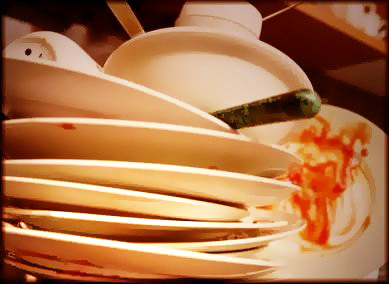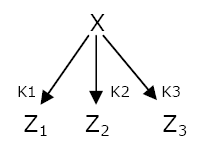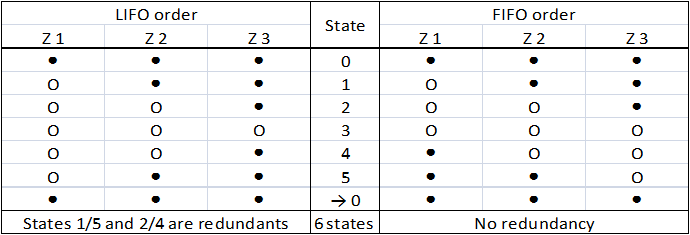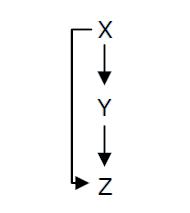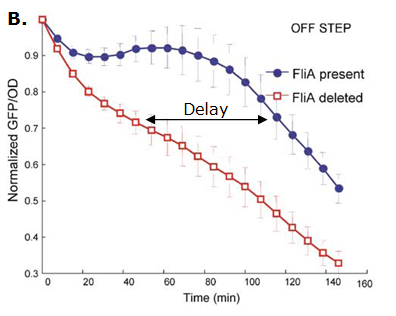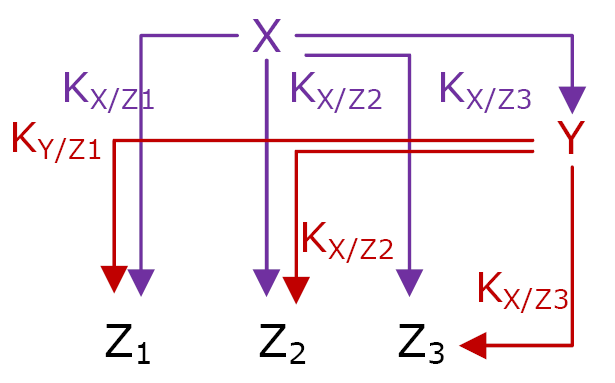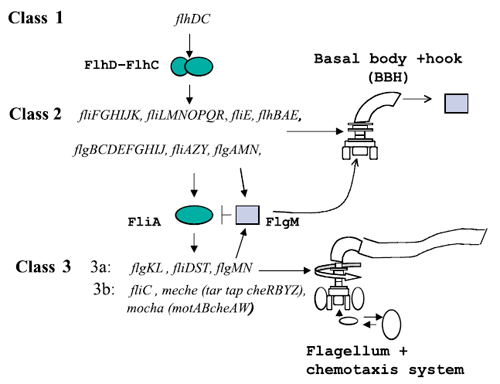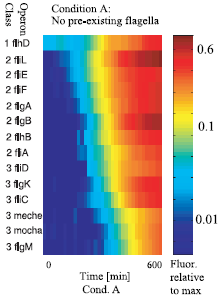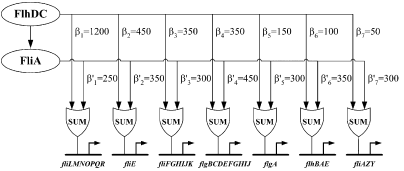Team:Paris/Analysis/Design1
From 2008.igem.org
(→The more sophisticated way to generate a FIFO behavior : a particular Multiple Output Feed-Forward Loop) |
(→Implementation of our FIFO) |
||
| (20 intermediate revisions not shown) | |||
| Line 1: | Line 1: | ||
{{Paris/Menu}} | {{Paris/Menu}} | ||
{{Paris/Header|Network Design - Part 1}} | {{Paris/Header|Network Design - Part 1}} | ||
| + | {{Paris/Section_contents_project}} | ||
=Generating a FIFO sequential order of expression= | =Generating a FIFO sequential order of expression= | ||
A clock that would only indicate one hour, would not be very useful. The same goes for our BacteriO'clock. It is necessary that we add several distinct events in each cycle. We want to use three genes activated successively. | A clock that would only indicate one hour, would not be very useful. The same goes for our BacteriO'clock. It is necessary that we add several distinct events in each cycle. We want to use three genes activated successively. | ||
| Line 14: | Line 15: | ||
==The rules to generate a FIFO temporal order== | ==The rules to generate a FIFO temporal order== | ||
[[Image:Order.png|center|thumb|690px|Table 1 : Comparison of the LIFO and the FIFO orders. (● : gene is OFF, O : gene is ON)]] | [[Image:Order.png|center|thumb|690px|Table 1 : Comparison of the LIFO and the FIFO orders. (● : gene is OFF, O : gene is ON)]] | ||
| - | In the contrary, '''in a FIFO order, there is no confusion possible between different states''' : they are all distincts. To generate this complex behavior, there are two major possibilities. | + | In the contrary, '''in a FIFO order, there is no confusion possible between different states''' (''Table 1'') : they are all distincts. To generate this complex behavior, there are two major possibilities. |
===The simplest way to generate a FIFO : a simple cascade of genes=== | ===The simplest way to generate a FIFO : a simple cascade of genes=== | ||
[[Image:Cascade.png|thumb|198px|Network 2 : A cascade of gene : the simplest way to generate a FIFO behavior.]] | [[Image:Cascade.png|thumb|198px|Network 2 : A cascade of gene : the simplest way to generate a FIFO behavior.]] | ||
| Line 24: | Line 25: | ||
===The more sophisticated way to generate a FIFO behavior : a particular Multiple Output Feed-Forward Loop=== | ===The more sophisticated way to generate a FIFO behavior : a particular Multiple Output Feed-Forward Loop=== | ||
The other way to implement a FIFO is based on a logic structure called Feed Forward Loop. | The other way to implement a FIFO is based on a logic structure called Feed Forward Loop. | ||
| - | {{Paris/Toggle|Click here to know more about Feed Forward Loops|Paris/FFL}} | + | {{Paris/Toggle|Click here to know more about Feed Forward Loops|Paris/FFL}} |
| - | More precisely, the genetic network is called Multiple Output FFL (''Network 3''). Each gene Z<sub>i</sub> is regulated by both X and Y, as in a typical FFL. X activates Z<sub>i</sub> when its concentration reaches the threshold K<sub>X/Zi</sub>. | + | More precisely, the genetic network is called Multiple Output FFL (''Network 3''). Each gene Z<sub>i</sub> is regulated by both X and Y, as in a typical FFL. X activates Z<sub>i</sub> when its concentration reaches the threshold K<sub>X/Zi</sub>. It is the same for Y and its respective thresholds. |
[[Image:MoFFL.png|thumb|left|250px|Network 3 : Multiple Output FFL is the logic structure that permit FIFO behavior. The thresholds must be ordered is a precise way : K<sub>X/Z1</sub> < K<sub>X/Z2</sub> < K<sub>X/Z3</sub> and K<sub>X/Z1</sub> > K<sub>X/Z2</sub> > K<sub>X/Z3</sub>]] | [[Image:MoFFL.png|thumb|left|250px|Network 3 : Multiple Output FFL is the logic structure that permit FIFO behavior. The thresholds must be ordered is a precise way : K<sub>X/Z1</sub> < K<sub>X/Z2</sub> < K<sub>X/Z3</sub> and K<sub>X/Z1</sub> > K<sub>X/Z2</sub> > K<sub>X/Z3</sub>]] | ||
| - | + | <br> | |
| - | + | All the MO FFL do not behave according to the FIFO order, three conditions are necessary and sufficient. | |
* The input function for each gene Z<sub>i</sub> must be a ''OR'' or a ''SUM'' gate. | * The input function for each gene Z<sub>i</sub> must be a ''OR'' or a ''SUM'' gate. | ||
* To have the order of expression Z<sub>1</sub>, Z<sub>2</sub> and then Z<sub>3</sub> at the switching ON, the thresholds must be ordered like this : | * To have the order of expression Z<sub>1</sub>, Z<sub>2</sub> and then Z<sub>3</sub> at the switching ON, the thresholds must be ordered like this : | ||
<center> K<sub>X/Z1</sub> < K<sub>X/Z2</sub> < K<sub>X/Z3</sub></center> | <center> K<sub>X/Z1</sub> < K<sub>X/Z2</sub> < K<sub>X/Z3</sub></center> | ||
* To have the FIFO order, Z<sub>1</sub> must be the first gene to be switched OFF when X is no more expressed. When X is not expresses anymore, its concentration decreases. The threshold K<sub>X/Z1</sub> will be reached after the thresholds K<sub>X/Z2</sub> and K<sub>X/Z3</sub>. As Y is still expressed when X decreases, its own concentration will decrease with a delay. To have a FIFO, Y concentration must reach K<sub>Y/Z1</sub> before K<sub>X/Z2</sub> and K<sub>X/Z3</sub>. The necessary order must be : | * To have the FIFO order, Z<sub>1</sub> must be the first gene to be switched OFF when X is no more expressed. When X is not expresses anymore, its concentration decreases. The threshold K<sub>X/Z1</sub> will be reached after the thresholds K<sub>X/Z2</sub> and K<sub>X/Z3</sub>. As Y is still expressed when X decreases, its own concentration will decrease with a delay. To have a FIFO, Y concentration must reach K<sub>Y/Z1</sub> before K<sub>X/Z2</sub> and K<sub>X/Z3</sub>. The necessary order must be : | ||
| - | <center> K<sub> | + | <center> K<sub>Y/Z1</sub> > K<sub>Y/Z2</sub> > K<sub>Y/Z3</sub></center> |
| - | <br>< | + | <br> |
| + | This network has several advantages compared to the cascade. It is more resistant to mutations : if gene Z<sub>1</sub> is mutated, genes Z<sub>2</sub> and Z<sub>3</sub> still behave as they should do. This is particularly interesting if we need more than three genes. The MOFFL is more robust concerning intracellular noisy fluctuations of concentration. The temporal expression of genes is more tunable : the expression of gene Z<sub>2</sub> can be fully activated even if Z<sub>1</sub> is not concentrated enough. | ||
==Implementation of our FIFO== | ==Implementation of our FIFO== | ||
| + | [[Image:FIFO.png|thumb|center|470px|Network 4 : Final design of our FIFO order generator system]] | ||
| + | Now that the necessaries and sufficient conditions have been depicted, we can start to describe our FIFO. Rather than designing it from scratch we decided to look in nature where we found and adopted the flagella system of construction in ''Escherichia coli'' which then inspired us further. | ||
| + | {{Paris/Toggle|Click here to know more about ''E. coli'' flagella.|Team:Paris/Flagella}} | ||
| + | *For X we chose ''flhDC'' and its natural promoter. | ||
| + | *For Y, we chose ''fliA'' and its natural promoter. | ||
| + | *For Z<sub>1</sub>, we chose ''fliL'' promoter and ECFP-LVA to report the expression. We chose ECFP because this fluorophore is not very fluorescent. As ''fliL'' promoter is the most strongly activated promoter, it compensate its weakness. | ||
| + | *For Z<sub>2</sub>, we chose ''flgA'' promoter and YFP-LVA to report the expression. | ||
| + | *For Z<sub>3</sub>, we chose ''flhB'' promoter and mRFP-LVA to report the expression. mRFP is the fluorophore that has the longest time of maturation. When put last in the FIFO, it helps to separate the different states. | ||
| - | + | The LVA tails are very important to reduce the fluorophores half lives from 20 hours minimum to 30 minutes. Those three fluorophores are compatible together, regarding to their absorption and emission wavelength. | |
| - | |||
| - | + | {{Paris/Navig|Team:Paris/Project}} | |
Latest revision as of 03:06, 30 October 2008
|
Network Design - Part 1
Generating a FIFO sequential order of expressionA clock that would only indicate one hour, would not be very useful. The same goes for our BacteriO'clock. It is necessary that we add several distinct events in each cycle. We want to use three genes activated successively. The easiest way to control a sequential expression of genes : the LIFO order
This order poses a real problem to us : several states of the system are redundant (Table 1). We can not accept a clock that would display twice the same hour !
The rules to generate a FIFO temporal orderIn the contrary, in a FIFO order, there is no confusion possible between different states (Table 1) : they are all distincts. To generate this complex behavior, there are two major possibilities. The simplest way to generate a FIFO : a simple cascade of genesThe first one, the simplest, which is also the most unsophisticated, is a simple cascade of genes (Network 2). When the first gene Z1 is switched on, it activates the second gene Z2, then the third gene Z3 is turned on. When gene Z1 is turned off, Z2 is switched off first, then Z3... This network is really simple to implement but presents several problems that makes it incompatible with our project. First of all, the cascade is not resistant to mutations : when one gene is mutated, the cascade is definitely broken. Secondly, the time scale if far too long. Each activation step would take approximately one hour. One full cycle would last almost six hours. Last but not least, the cascade is probably not very resistant to intracellular noise, it is not robust enough. The more sophisticated way to generate a FIFO behavior : a particular Multiple Output Feed-Forward LoopThe other way to implement a FIFO is based on a logic structure called Feed Forward Loop. ↓ Click here to know more about Feed Forward Loops ↑
More precisely, the genetic network is called Multiple Output FFL (Network 3). Each gene Zi is regulated by both X and Y, as in a typical FFL. X activates Zi when its concentration reaches the threshold KX/Zi. It is the same for Y and its respective thresholds.
Implementation of our FIFONow that the necessaries and sufficient conditions have been depicted, we can start to describe our FIFO. Rather than designing it from scratch we decided to look in nature where we found and adopted the flagella system of construction in Escherichia coli which then inspired us further. ↓ Click here to know more about E. coli flagella. ↑
The LVA tails are very important to reduce the fluorophores half lives from 20 hours minimum to 30 minutes. Those three fluorophores are compatible together, regarding to their absorption and emission wavelength.
|
 "
"

